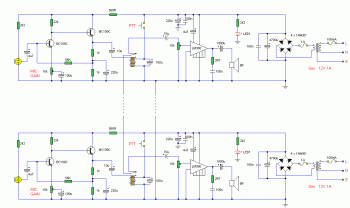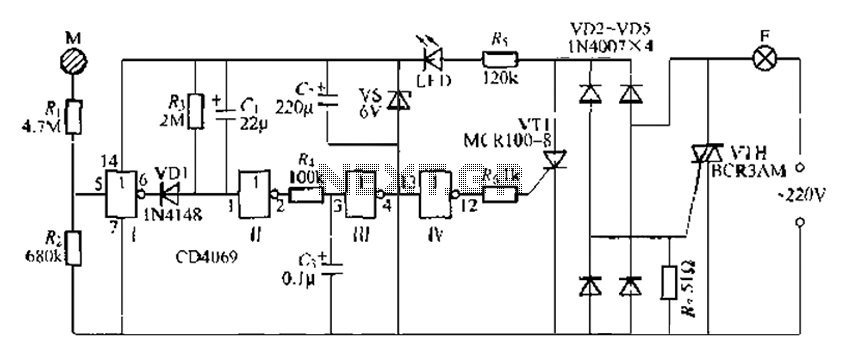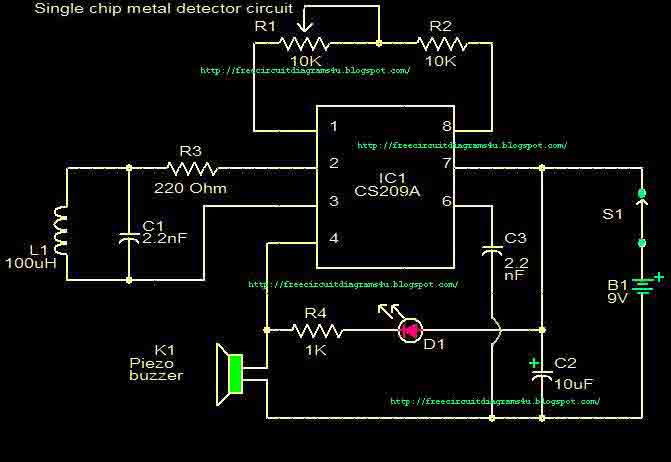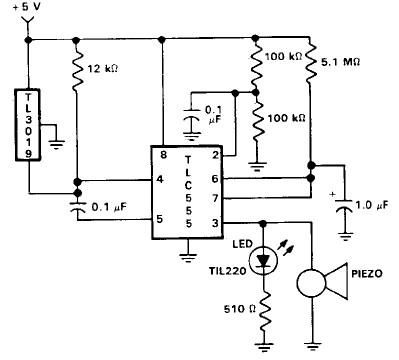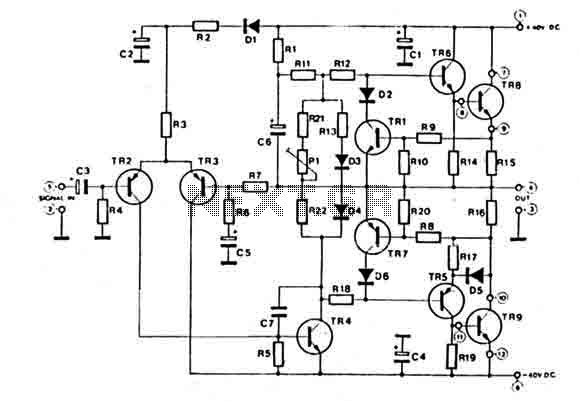
Amplifier circuit equivalent
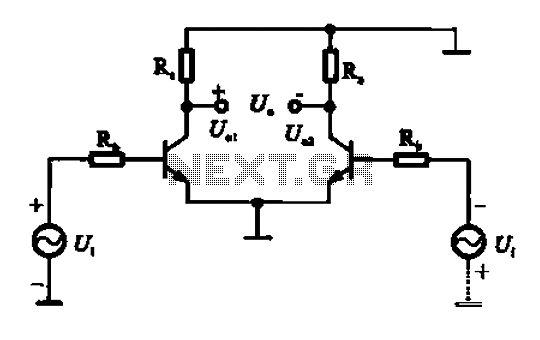
An amplifier circuit is designed to handle an assumed input consisting of two equal and opposite polarity signals, known as a differential mode signal. The two tube collector currents, Ic and IC7, are balanced in such a way that to increase the current I, it is necessary to decrease the current IC2. Consequently, the current flowing through the resistor Re becomes zero (i.e., Ue = 0), which implies that there is no impact from the differential mode signals, resulting in no negative feedback. This configuration does not affect the amplification of the differential mode signals.
The described amplifier circuit operates on the principle of differential mode signaling, which is essential in various applications such as operational amplifiers and audio amplifiers. The circuit utilizes two active devices, such as transistors or vacuum tubes, arranged in a way that their outputs are inversely related. This arrangement allows for the enhancement of the desired signal while simultaneously rejecting common-mode noise, which is noise that appears equally on both inputs.
In this circuit, the collector currents Ic and IC7 are critical parameters that dictate the performance of the amplifier. By maintaining a balance between these currents, the circuit ensures that the differential mode signals are amplified effectively without the influence of negative feedback mechanisms that could distort the output. The resistor Re plays a pivotal role in stabilizing the operating point of the amplifier. When the current through Re is zero, it indicates that the circuit is optimally configured for differential mode operation, allowing the amplifier to respond linearly to input variations.
Furthermore, the design of the amplifier must consider the frequency response, gain characteristics, and power supply requirements to ensure that it meets the desired specifications for its intended application. The absence of negative feedback in this configuration is particularly advantageous for high-fidelity applications where signal integrity is paramount. Overall, the amplifier circuit described is a fundamental building block in electronic design, showcasing the principles of differential amplification and current balancing.Amplifier circuit equivalent O assumed input of the circuit plus two equal and opposite polarity signals (differential mode signal). The two tube collector current Ic, and IC7 equal and opposite, namely to increase the number of South I, IC2 is necessary to reduce the number. Thus the current flowing through the change amount of Re is zero (i.e. Ue 0, which is adjacent to no effect on the presence of differential mode signals, i.e., no negative feedback), does not affect the differential mode amplification. Therefore, the differential-mode signal words,
The described amplifier circuit operates on the principle of differential mode signaling, which is essential in various applications such as operational amplifiers and audio amplifiers. The circuit utilizes two active devices, such as transistors or vacuum tubes, arranged in a way that their outputs are inversely related. This arrangement allows for the enhancement of the desired signal while simultaneously rejecting common-mode noise, which is noise that appears equally on both inputs.
In this circuit, the collector currents Ic and IC7 are critical parameters that dictate the performance of the amplifier. By maintaining a balance between these currents, the circuit ensures that the differential mode signals are amplified effectively without the influence of negative feedback mechanisms that could distort the output. The resistor Re plays a pivotal role in stabilizing the operating point of the amplifier. When the current through Re is zero, it indicates that the circuit is optimally configured for differential mode operation, allowing the amplifier to respond linearly to input variations.
Furthermore, the design of the amplifier must consider the frequency response, gain characteristics, and power supply requirements to ensure that it meets the desired specifications for its intended application. The absence of negative feedback in this configuration is particularly advantageous for high-fidelity applications where signal integrity is paramount. Overall, the amplifier circuit described is a fundamental building block in electronic design, showcasing the principles of differential amplification and current balancing.Amplifier circuit equivalent O assumed input of the circuit plus two equal and opposite polarity signals (differential mode signal). The two tube collector current Ic, and IC7 equal and opposite, namely to increase the number of South I, IC2 is necessary to reduce the number. Thus the current flowing through the change amount of Re is zero (i.e. Ue 0, which is adjacent to no effect on the presence of differential mode signals, i.e., no negative feedback), does not affect the differential mode amplification. Therefore, the differential-mode signal words,
